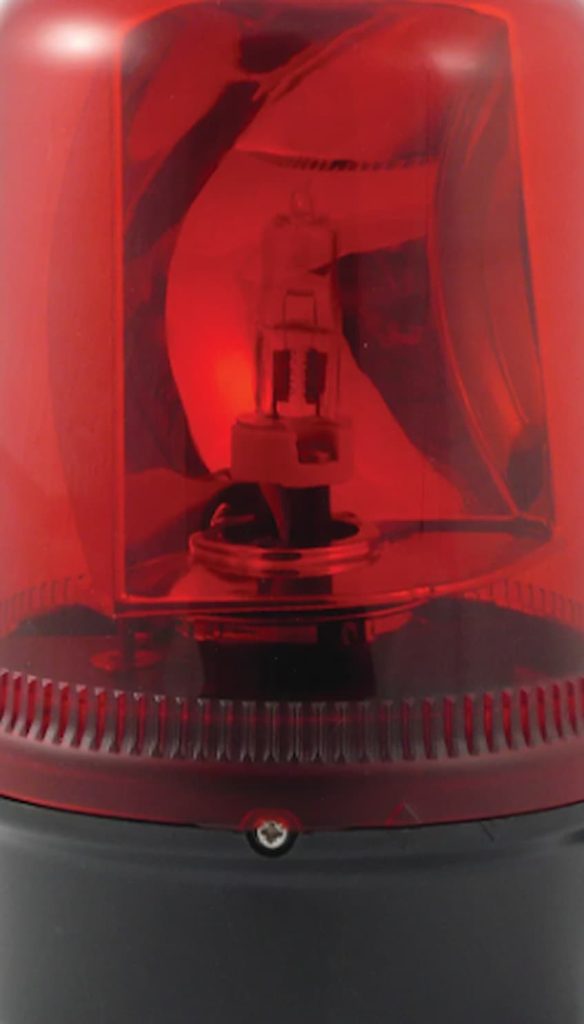Preventive measures and safety precautions may sit at the core of a safe workplace, however, when disaster strikes, informing everyone of it is as important as preventing it. Therefore, the use of alarms, especially in the case of a fire, is an essential addition to every work area’s safety protocol.
Just like alarm clocks, fire sounders send an audible alert that lets people in the area where it’s installed know that an emergency situation is taking place and they need to leave said area. Although the goal of every fire sounder is the same, the way they detect that there is a fire or the possibility of it, and the way they are set up can vary greatly from sounder to sounder.
Types of Sounders

Electronic
What most fire sounders rely on nowadays are microprocessor, which makes them electronic alarms. Such a device requires a loudspeaker to emit a tone generated by the microprocessor. An electronic fire sounder can therefore generate a wide variety of tones at different frequencies. This also means that you can set the volume of the tone individually for each tone, which is especially useful with multi-tone alarms.
Multi-Tone
Talking about multi-tone fire alarm sounders, they operate similarly to electronic sounders as they too make use of a loudspeaker and a microprocessor. However, they are more versatile since they are able to generate more than just one tone and do so at different times of the day, depending on when an emergency occurs. You can also set one to only emit one type of tone, no matter the time of day or the frequency at which you set the tone.
Electromechanical
While not as advanced as multi-tone or electronic fire alarms, electromechanical ones do make for much simpler solutions. That’s because they don’t rely on a complicated set of wiring and PCBs. Electromechanical sounders do require the use of a magnetic force in order to move a clapper that hits a metal diaphragm. This is how the sound is made as the clapper strikes at frequencies between 100 and 150 Hz.
Alarm Horn
With an alarm horn, you get the oldest type of fire alarm in use today. It relies on the same mechanism as an electromechanical one, however, it emits tones at low frequencies, which makes for quite a recognisable sound. Alarm horns are therefore the most affordable and easiest to repair and to set up, too. Just don’t expect to get the loudest of alerts or the most versatile of solutions.
Piezo

Piezoelectric buzzers or alarms are a mix between electromechanical and electronic fire alarm sounders, as they make use of both a mechanical moving part and an electric charge. These alarms make use of a disc and crystals, which, when exposed to a certain amount of voltage, the latter tend to vibrate and create a noise when they hit the former. The generated sound sits at frequencies between 2000 and 4000 Hz, and it comes from an inexpensive and rather small device.
Detection Methods
Heat
However, before a tone is generated, there needs to be something to trigger it, and the trigger can be detected in one of four ways, with a heat detector being one of the most common. A fire siren alarm with head detection is one that detects the sudden change in air temperature, which occurs when a flame is present. But being reliant on temperature alone means that this type of mechanism can cause false alarms rather easily.
Ionisation
Unlike alarms that rely on heat detection, those that rely on ionisation offer a more reliable way to detect a fire. That’s because the mechanism works by having two electrically charged plates sit close to each other while having current run between them. When smoke hits the current running between the plates and causes the alarm to sound. This type of alarm can detect fast-burning fires rather quickly.
Photoelectric
A photoelectric detection method works by relying on a laser beam to perform a similar process to that in an alarm that uses the ionisation method. When smoke hits the light, the laser is projecting, which triggers the alarm. However, the photoelectric method only performs well when there are small fires.
Combined
The most foolproof detection method is a combination of the ionisation and photoelectric methods working together. Both a current and a light beam are present and either one being disrupted sounds the alarm. This type of sounder can detect both quick-burning and small fires, making it ideal in almost any circumstance.
Visible vs. Audible Alarms
The main difference between visible and audible alarms is versatility. While a visible alarm can be seen across a long distance, an audible siren alarm can be heard from afar. Both perform well, however, audible alarms are preferred in large open spaces, while visible alarms are used in low-visibility areas. Combining both is the way forward, not just sticking to a single solution.


![FlightLine P-51D Mustang 850mm Wingspan PNP [FLW101P]](https://coffeechat.com.au/wp-content/uploads/2025/10/flightline-p-51d-mustang-850mm-33-wingspan-pnp-motion-rc-35666552324281-150x150.jpg)